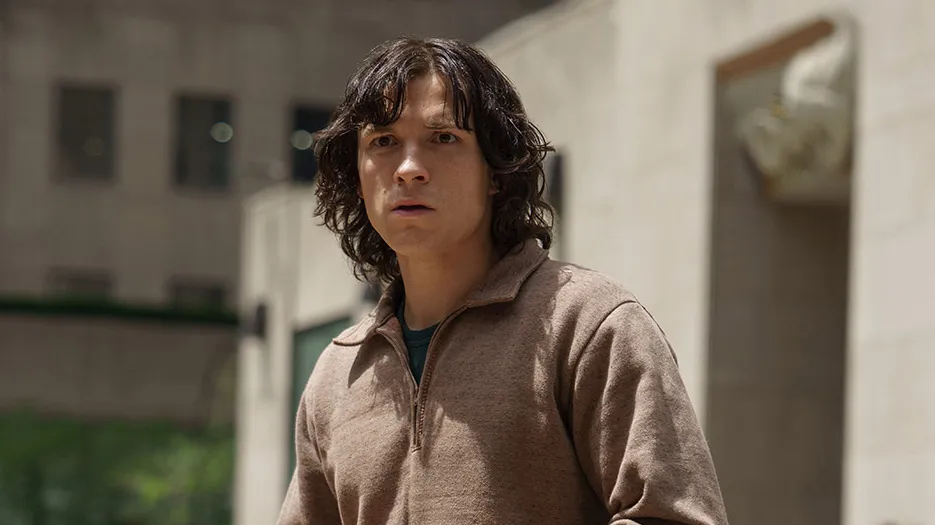In recent times, “The Crowded Room,” has rapidly risen to Internet fame, dominating online discussions, primarily due to one episode which sent shockwaves throughout the cyberspace. Episode 8, featuring Tom Holland’s character, Danny, engaging in a heated scene with Jerome (played by Elijah Jones), has been a hot topic of debate. This scene, rather unconventional, unveiled the fact that the feminine alter-ego of Danny, Ariana (portrayed by Sasha Lane), was taking the lead in this intimate encounter.
Breaking Barriers with Danny’s Alter-Egos

While Danny, in his own persona, hasn’t been involved in sexual interactions, his alter-egos break this mold. It’s fascinating to note that Ariana, the only feminine alter-ego, is the principal figure in most of the intimate scenes, suggesting that Danny finds more comfort in sexual expression as a woman. This subtext of comfort may provide a powerful insight into Danny’s fluid gender identity. Ariana is the perfect foil to Danny’s character, embodying confidence and passion in stark contrast to Danny’s introverted and anxious nature.
Ariana: A Crucial Facet of Danny’s Personality

The series implies that Danny identifies as a cisgender, heterosexual male. However, Ariana disrupts this notion through her self-assured interactions with her partners. Further adding layers to the complexity of Danny’s identity, Jerome addresses Danny as Ariana, switching pronouns, an approach often preferred by individuals who identify as gender-fluid. Every one of Danny’s alter-egos is an intrinsic part of him and wouldn’t exist in isolation. This is significantly reflected when it’s revealed that Ariana’s assaulter and Danny’s stepfather and tormentor, Marlin (played by Will Chase), are the same individual.
Danny’s alter-egos share his traumatic past, reinforcing their bond. Ariana, who identifies as bisexual, probably mirrors Danny’s own bisexuality. Danny’s fear of sexual engagement, a result of his history of abuse, is managed by Ariana taking the helm with Annabelle. Ariana is arguably the closest to Danny amongst all his alter-egos, with whom he connects most deeply. In the absence of his dissociative identity, it’s likely that Danny would manifest traits similar to Ariana, including her coping mechanisms and lifestyle.
Raising Eyebrows: Ariana’s Affiliation with the LGBTQ+ Club and Rya

Intriguingly, Ariana’s preferred hangout spot is an LGBTQ+ club, a space dedicated to the non-cis, non-straight community, further reinforcing her interaction with men. This choice of social environment is a profound statement, particularly considering the societal hostility towards the LGBTQ+ community in 1979. Despite Danny’s apparent fixation on Annabelle, he not only condones but also participates in Ariana’s relationship with Jerome.
While cooperating with Rya (Amanda Seyfried), Danny demonstrates an ability to recall actions performed by his alter-egos. This becomes notable when he remembers Johnny’s sexual involvement with a drug dealer, Angelo (Stephen Barrington), in a bid to acquire drugs.
Danny’s Shame and Healing Journey

Danny is deeply remorseful of Johnny’s relationship with Angelo, which led to his further exploitation, mirroring his past encounters with Marlin. However, he harbors no shame about Ariana’s pursuit of intimacy for its own sake. While Danny is yet to declare his personal gender identity or sexual orientation, he appears to endorse any relationship that distances him from the haunting memories of Marlin.
His primary objective is to fully integrate with his alter-egos, an important step towards his path to healing. This journey could potentially lead to an acceptance of fluid gender and sexuality, considering that some of his alter-egos identify with the LGBTQ+ spectrum.
In conclusion, “The Crowded Room” is not just an engaging series that keeps viewers on the edge of their seats but is also a meaningful exploration into the complexities of gender identity and sexual orientation. The profound depiction of Danny’s multiple identities serves as an essential narrative, opening up crucial conversations about fluidity in sexuality and gender. In the process, it offers viewers an insightful look into the spectrum of human identities and experiences.


